“Wagara” are traditional Japanese patterns. They are historic designs, each with a specific meaning, initially created for decorating traditional Japanese garments – kimono and yakata. The original patterns date back to the 8th century Heian period of Japan, and are largely inspired by nature. Let’s take a look at some wagara, their inspiration and meaning.
The evolution of wagara
Wagara were crafted using techniques from painting and Chinese calligraphy. They each have a meaning and were worn with purpose for different seasons and occasions. Many of the original wagara designs were imported from China and Korea during the Heian period (794-1185) of Japan’s history. However, over the centuries, designs were localized and re-interpreted.
New designs emerged, particularly during the Edo period (1603-1868) when decorative objects were highly prized; technology was rapidly developing; and rules governing their exclusive use by certain social classes were loosening.
In the last century, this language of wagara was being lost. Younger generations were moving away from cultural dress towards more globalised garb. This spurred the use of wagara in homewares and fashion accessories instead. There was an effort to prolong the dialect of these traditional Japanese patterns through other objets d’art. You will certainly recognise some of these wagara from textiles, art, decorative pieces and tablewares–you may even have some in your home.
Traditional Japanese patterns
Though new wagara have emerged through more recent history, there are several traditional designs regarded as “the originals”. Here are a few popular examples.
Seigaiha
Seigaiha (青海波) translates to “blue ocean waves” and is a geometric design representing water. The Japanese wave pattern is formed using overlapping concentric circles to form a series of arches, scallops or scales. The pattern was historically used to depict the sea on Chinese maps. It was first used in Japan during the Momoyama Period (1573-1603) to decorate the costumes of Noh theatre performers. Seigaiha was popularised during the Edo period by the samurai class.
Versions of this pattern also appeared in other ancient civilisations such as Egypt and Persia. In Japan, the pattern symbolizes peace and good luck.

Tatewaku
Tatewaku (立涌) is a sinuous design of vertical waves that resemble the rising of steam, thought to be auspicious. The Tatewaku pattern was likely adapted from similar Chinese designs. It has also been compared to mist rising off waterways in the spring–the symbolic meaning of Tatewaku is, therefore “rising above” circumstances.
During its infancy in the Heian period, the design appeared on the kimonos of high status people. The advanced techniques required to weave the pattern into textiles meant it was only worn by wealthy individuals.
There are many variations of the design where different motifs are placed within the hourglass forms of the parallel waves. Popular combinations include clouds (kumotatewaku 雲立涌) and chrysanthemum (kikutatewaku 菊立涌).
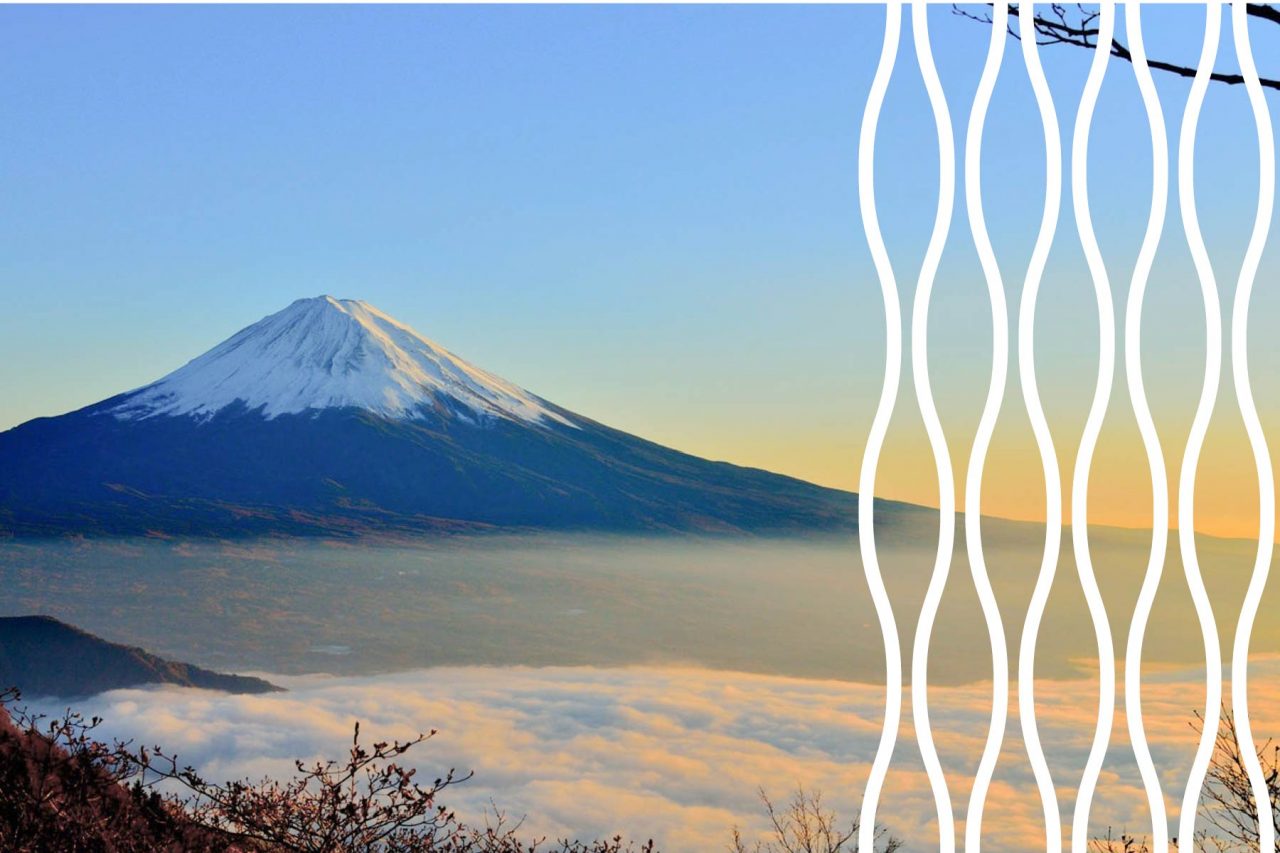
Kikkou
Kikkou (亀甲) is a tortoiseshell design that represents intellect and longevity. This wagara began as a Chinese motif. It was adapted by the Japanese during the Heian Period (794 – 1185) when it was used in the decoration and dress of the imperial court. The hexagonal pattern was later used in warrior kimono, weapons and armor. Kikkou’s auspiciousness comes from its association with “tsurukame” (鶴亀 crane and tortoise motif) – a symbol of longevity.
Bishamon Kikkou is a simplified version of Kikkou. The pattern is made up of three linked tortiseshell motifs, without their inner lines. This Wagara was named after Bishamonten who is one of the Seven Gods of Luck in Japanese culture.

Kagome
Kagome (籠目) is a hexagonal design inspired by a traditional basket weave. The name, Kagome, is made up of the Japanese words meaning “basket” and “eye”. This Wagara is thought to ward off evil.
The Kagome weaving pattern is often created using bamboo and is common across East Asia. An archaeological dig in Chongquing, China in 2022, found remnants of bamboo weaving in this pattern. The artefact was unearthed from a tomb roughly 2200 years old.
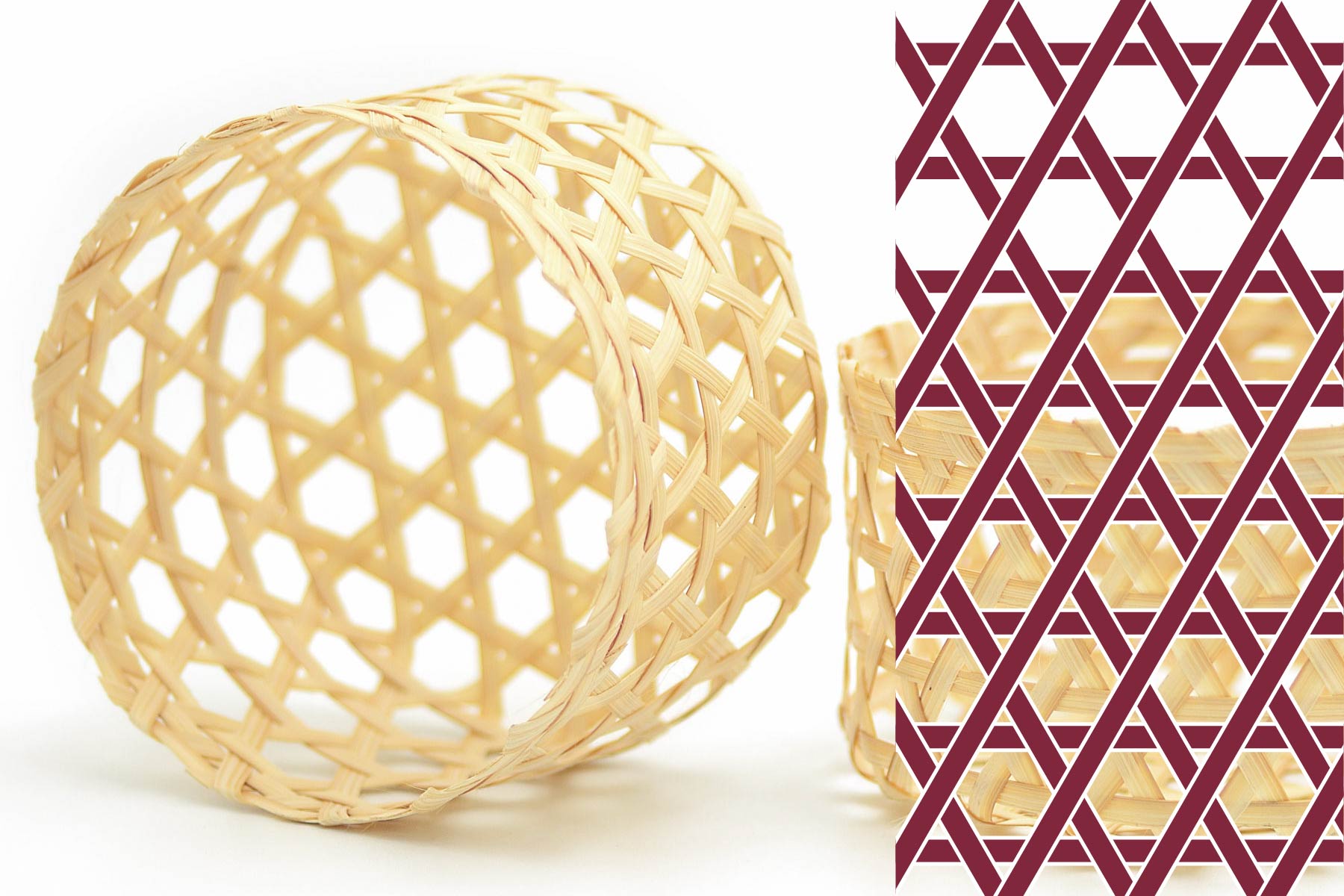
Hishi
Hishi (菱) is the abbreviation of hishimon and is a diamond design that symbolizes prosperity. The pattern is inspired by the leaves of the water chestnut, an aquatic plant that exhibits high productivity. The design can be seen in many different variations including construction where roof beams or lattice cross to form the repeating diamond shapes.
A variation of the hishi pattern is called hanabishi, after the water chestnut flowers it represents. The stylized, four-petalled blooms form a repeating diamond or rhombus shape. The hanabashi pattern was created in the Heian period. During this time, the design was only used by court officials. Over time it became frequently used on samurai crests and eventually, by everyday people.
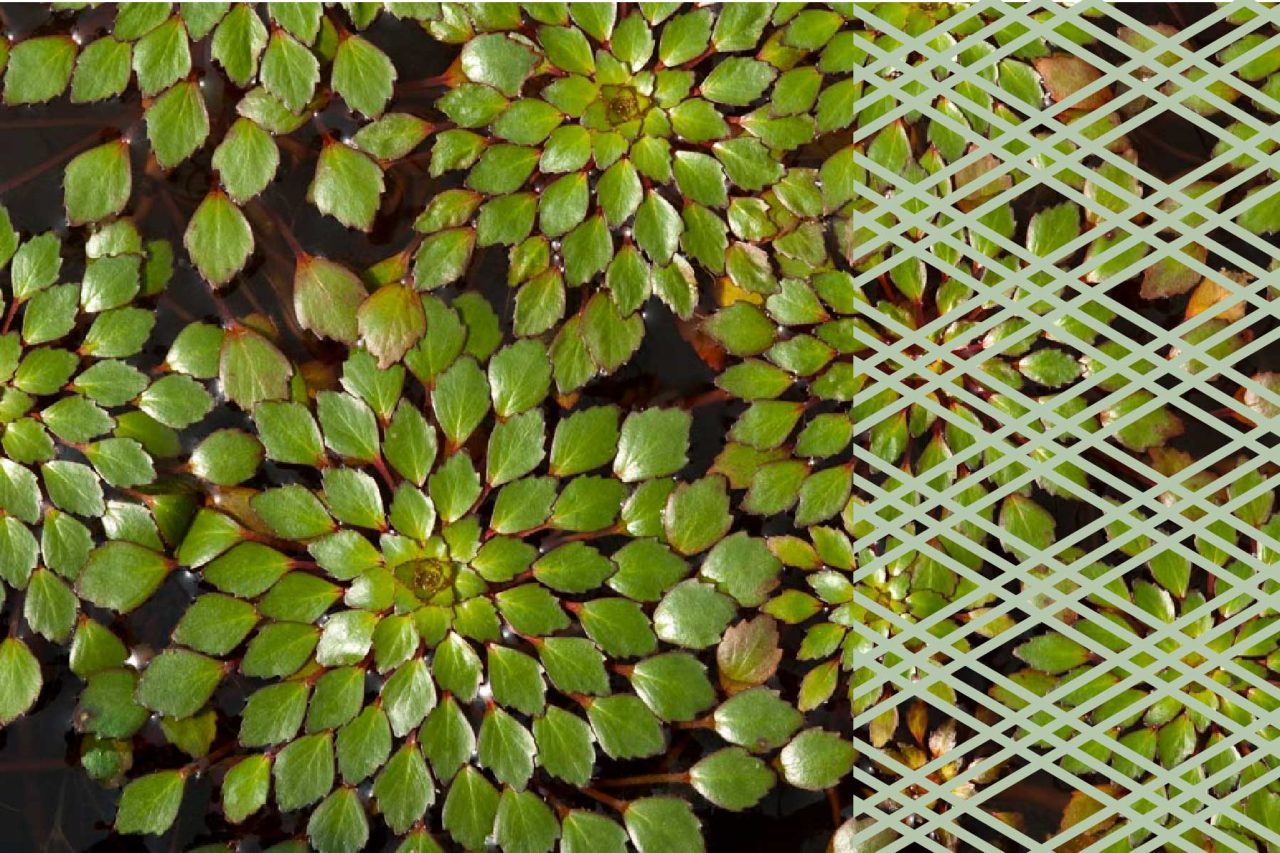
San Kuzushi
San Kuzushi (三崩し) or Sannojikuzushi (三の字崩) is a crosshatch pattern made up of alternating horizontal and vertical sets of three lines. These lines come from the character 三 san. The design is another basketweave derivation. It is commonly used in architecture, particularly as muntin (bars that divide window panes or screens) or transom designs.

More traditional Japanese patterns
Since these traditional designs emerged, many more have followed. Today, designers will blend modern motifs with traditional patterns to create new Wagara. Here are some other commonly seen patterns that appeared over time.
Shima
Shima (縞) simply means “stripe.” A variation of the pattern is Yoshiwara Shima, vertical stripes or chains formed by interlinking diamonds. Yoshiwara is the name of the Tokyo red-light district during the Edo Period (early 17th century). Back then the chains were probably more symbolic of the life of a courtesan in Yoshiwara rather than their wealthy clients who wore the design. Now the chains are thought to represent the links of a community and the pattern is good luck.
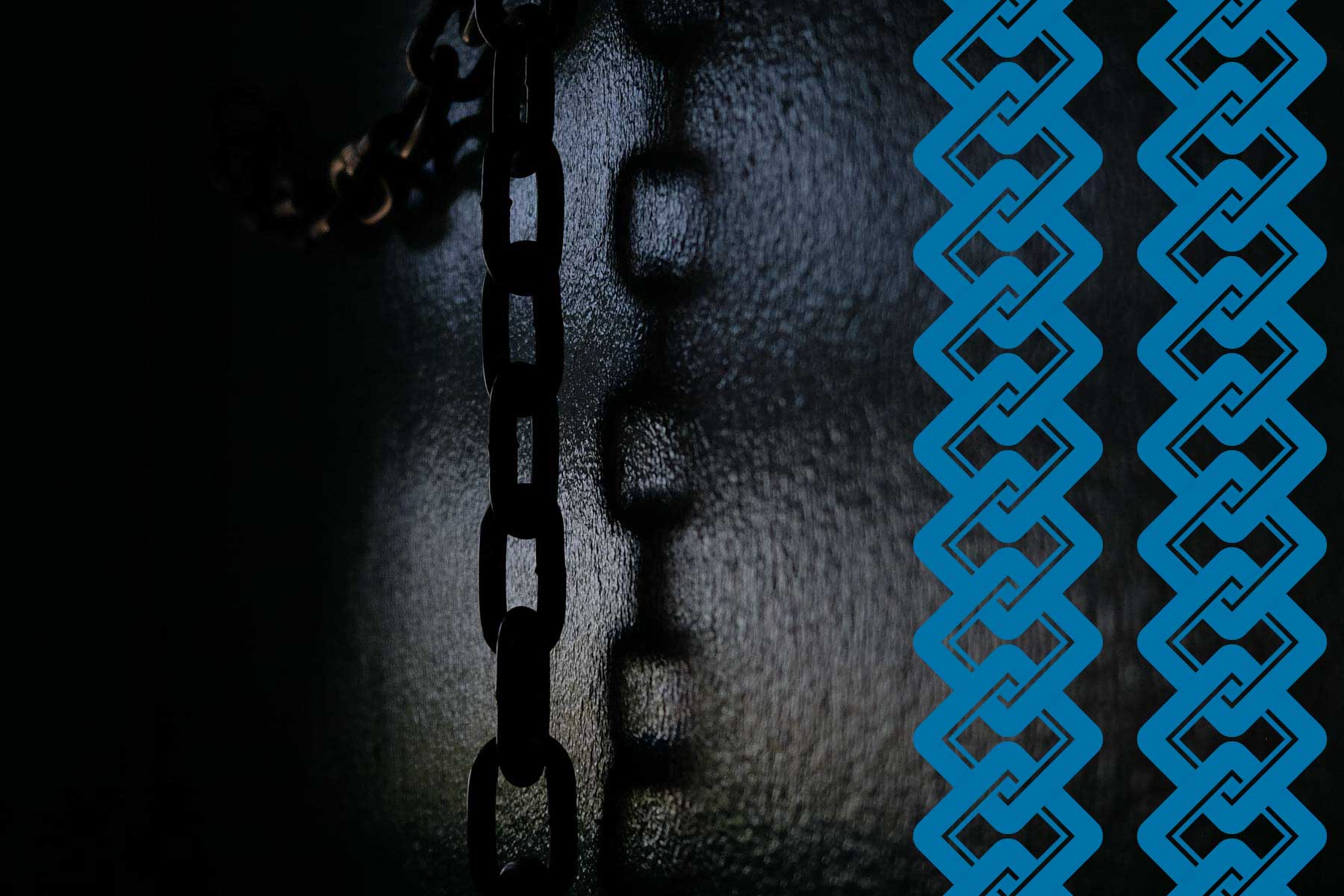
Uroko
Uroko (鱗) meaning “scales”, is a traditional Japanese pattern of alternating dark and light triangles. The scales are thought to have a protective quality when symbolizing a dragon on a kimono or obi. The design is also used in theatre to represent a snake in the costumes of villains.

Ichimatsu
Ichimatsu (市松) is a simple check or plaid design named after an 18th-century kabuki actor who wore the pattern on his costume hakama. However, the design and its popularity long pre-date the Edo Period (1688-1703) and actor, Sanogawa Ichimatsu.
During the Heian period, a popular checkerboard design was named after paving stones–ishidatami-mon (石畳文). Also, a smaller scale version was called arare (霰), which refers to hail or small cubes of rice cake.
You might have noticed these checks were part of the 2020 Tokyo Olympic and Paralympic Games branding.

Shippou
Shippou is a pattern of interlocking circles. It’s based on the seven Treasures of Buddhism: gold, silver, lapis lazuli, agate, seashell, amber and coral which each represent a quality Buddhists strive to uphold. The pattern is sometimes adorned with other motifs such as flowers.
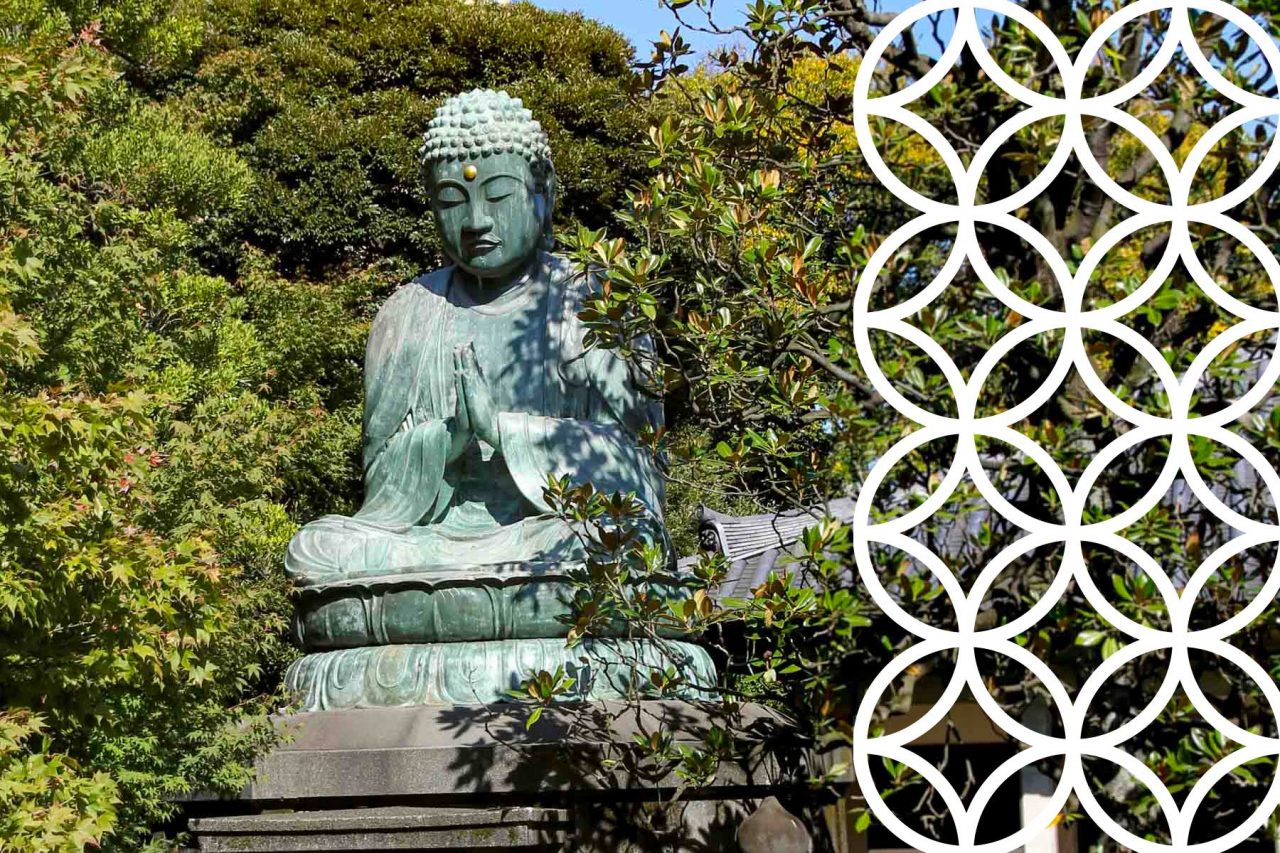
Asanoha
Asanoha is named after the hemp leaf. The motif is comprised of six diamonds radiating from a common centre point. Hemp is fast-growing and durable, therefore the pattern is commonly used in young children’s clothes with hopes that they grow strong and healthy.

Sayagata
Sayagata is a fret design based on interlocking Manji, the ancient Hindu turned Buddhist swastika pictogram (long before it was appropriated by the Third Reich).
The Manji design developed in India and is linked with the Buddhist concept of eternity. It’s an auspicious pattern that is often paired with motifs such as plum blossoms, chrysanthemums, bamboo and orchids.
The pattern was introduced to Japan through China, woven into silk fabrics called “saya” during the Tenshō era (1573-92).
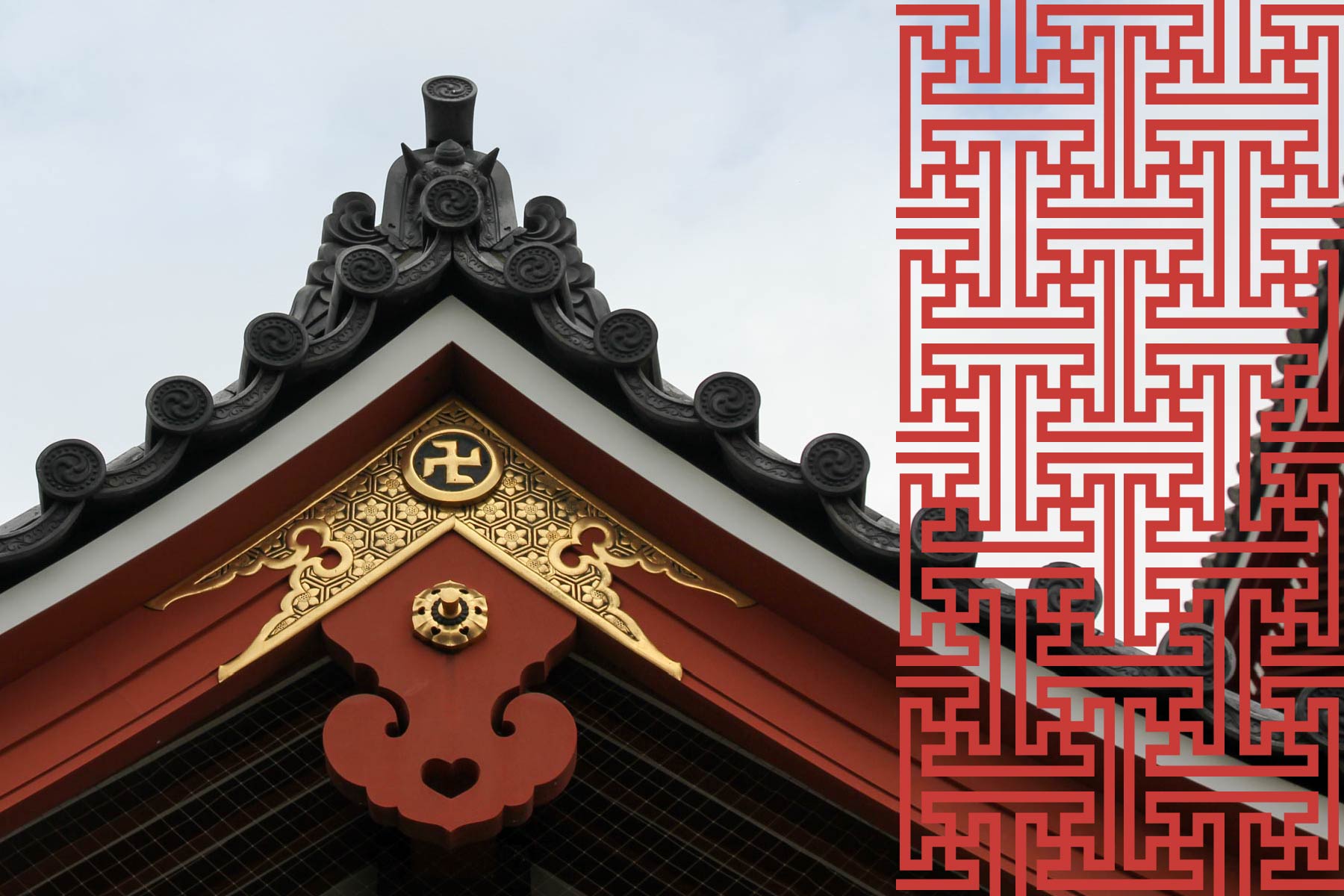
Yagasuri
Yagasuri or Yabane is an arrow design that is strongly associated with the Japanese saying that an arrow fired, never returns. Therefore the pattern is often worn at weddings as a symbol of good luck and a bride not returning to her parents. At graduations it is an auspicious symbol representng unwavering determination. Arrow-shaped charms are sold at shrines around the New Year to repel bad fortune.

Same Komon
This traditional Japanese pattern was named for the skin of a shark, which it was thought to resemble. The pattern is composed of overlapping circles of dots. It was initially used by the Kishū Tokugawa family, from which three shoguns (military commanders) belonged. Same Komon was stenciled onto warrior’s garments during the Edo Period. It later became used more widely and is often used as a background for more complex designs.
Same Komon is thought to be a protective design, preventing the wearer from illness and shielding them from evil. There is a tradition of brides bringing a kimono decorated with the sharkskin pattern to her new family home.

Kanoko
Inspired by the spotted back of a fawn, kanoko is created using an intricate tie-dying technique. Though tie-dying had been used much earlier in pre-Heian times, it was the Edo artisans that developed the precision technique to create such a fine motif.
Kanoko is not recorded to have a specific meaning. However, due to the labour-intesive nature of its production, it was historically expensive and therefore became a luxury item worn only on the kimonos of the wealthy.

For more on traditional Japanese patterns, check out the Japan America Society of Houston’s Wagara Wednesday series. You can also find further cultural insight and design inspiration from Japan, right here on Duende in these posts:
Kawara: Decoding Roof Tiles of Japan
The Meaning of Shide and Shimenawa
Cherry Blossoms Meaning & Symbolism – The Ultimate Guide
Where to go in Tokyo | A Culture-Lovers Guide
Peace, love & inspiring travel,
Madam ZoZo
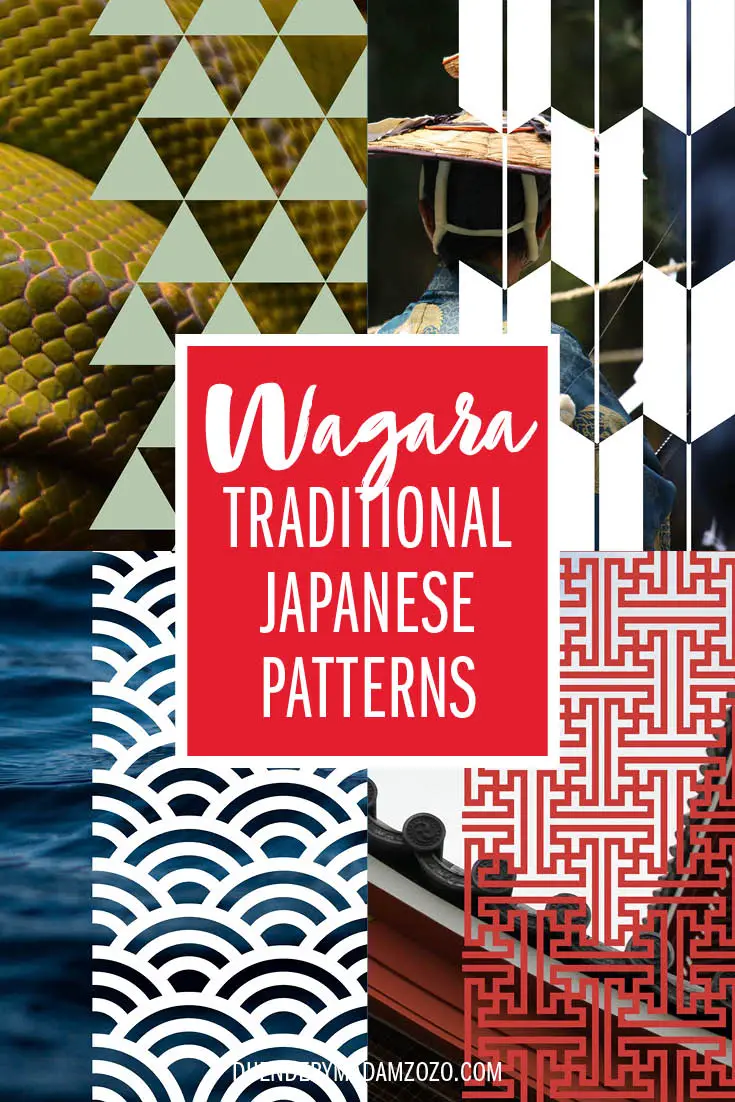
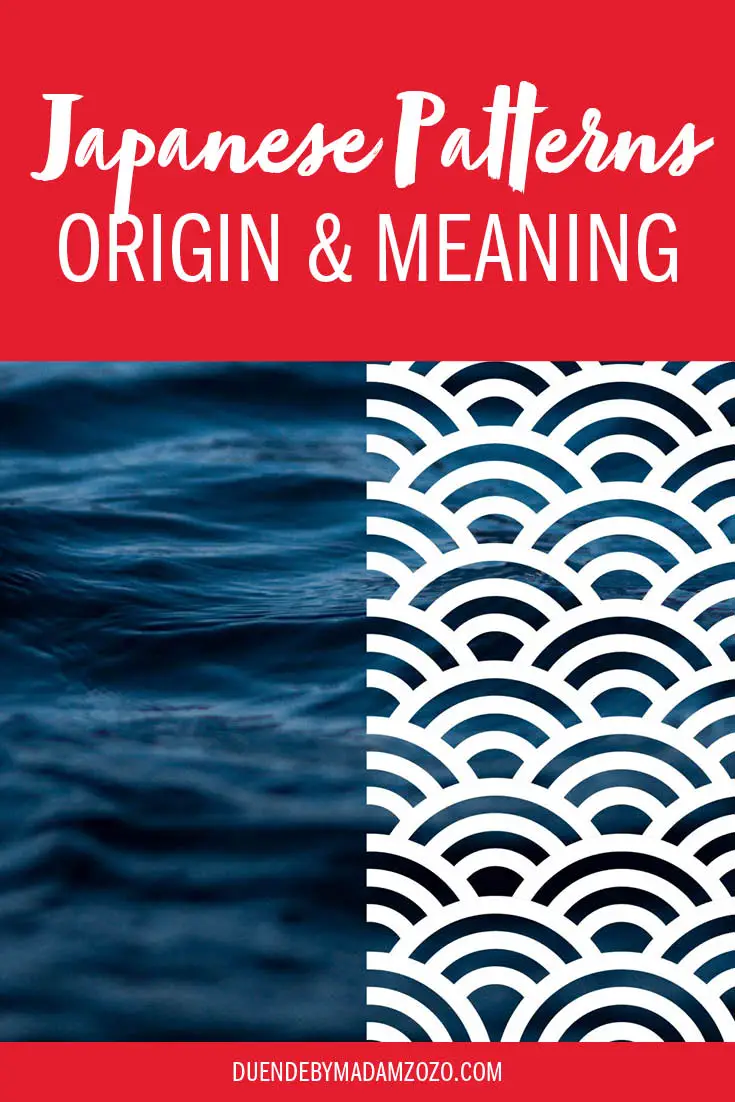



9 comments
Hi, you have the description of the yabane pattern twice, for the actual pattern and for the motif above it!
Thanks for letting me know, Maddie. I’ll fix that right away!
Hi, Great page :)
Unfortunately, now yabane picture is missing, and name and description of the one above is missing.
Best regards.
Hi Jo,
Thanks for taking the time to let me know. I’ve just fixed the missing picture and description. So glad you like the page.
Madam ZoZo
Wonderful descriptions – and brilliant to add the photos of how the elements appear in nature. Thanks!
Thanks for leaving your feedback, Nancy – I’m so glad you enjoyed this post!
Love your simple descriptions and pictures!
GREAT Article! I loved how much research and art went into it- Worthy of a printed book.
Thank you, Genevieve, that’s very sweet of you to write. I appreciate you taking time to leave me feedback.
Zoë aka Madam ZoZo